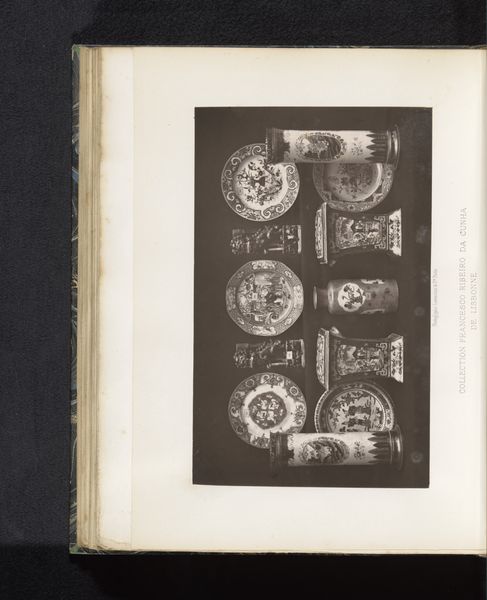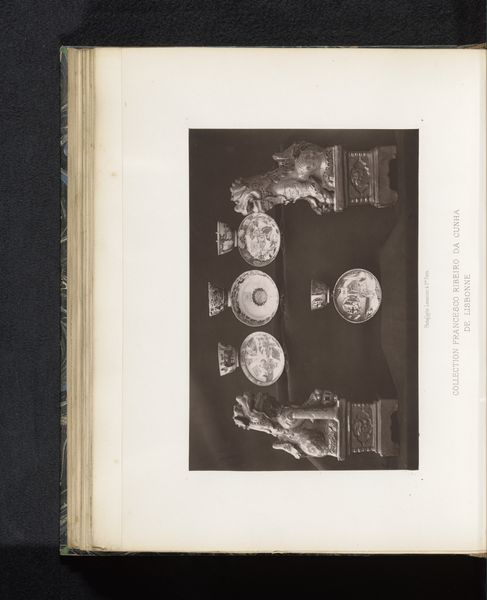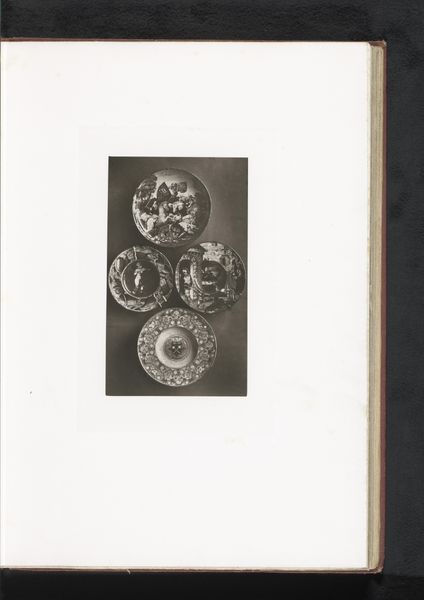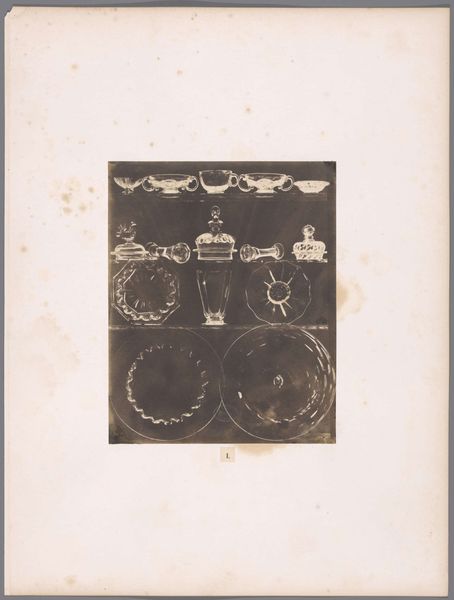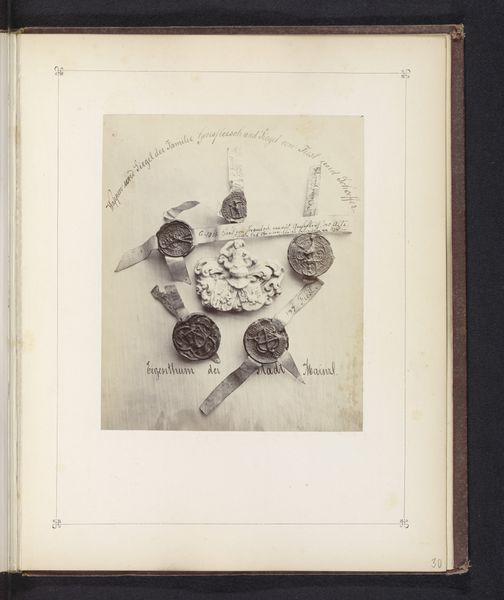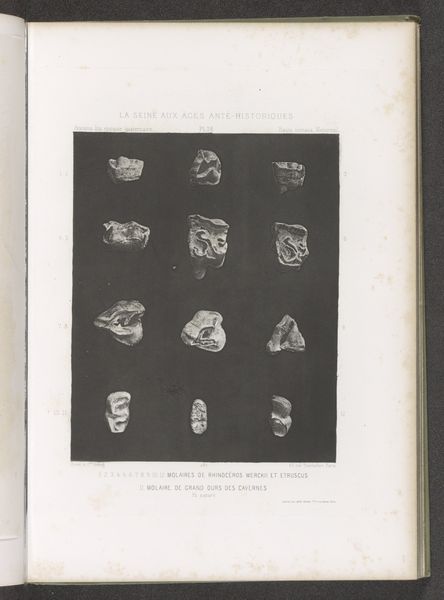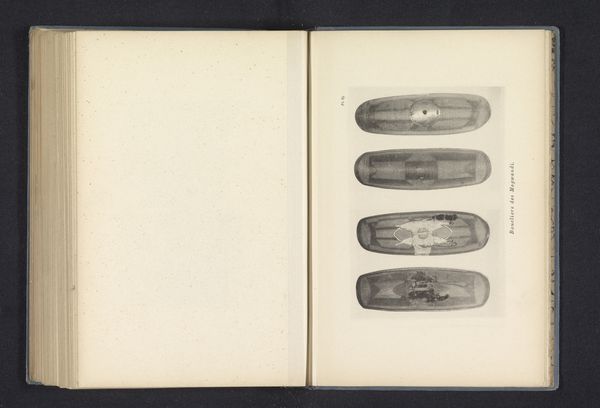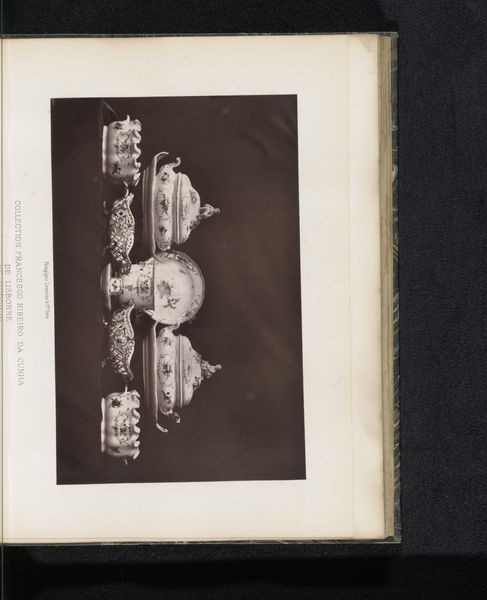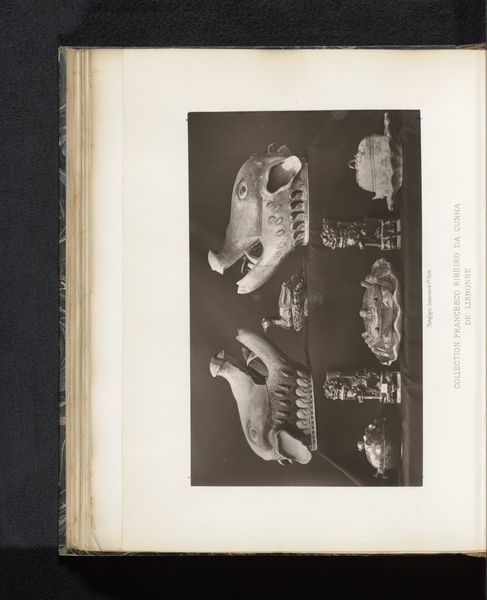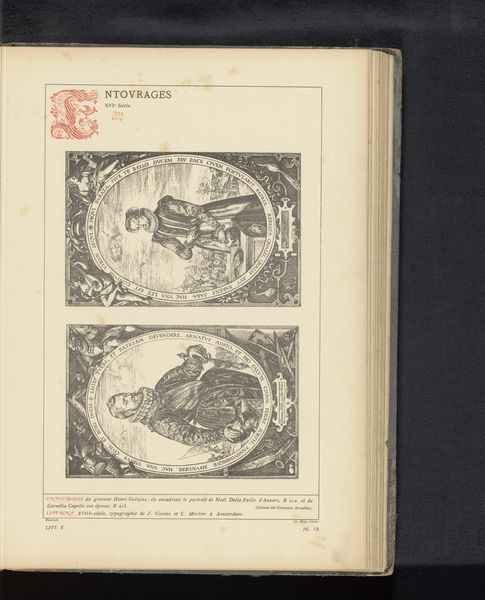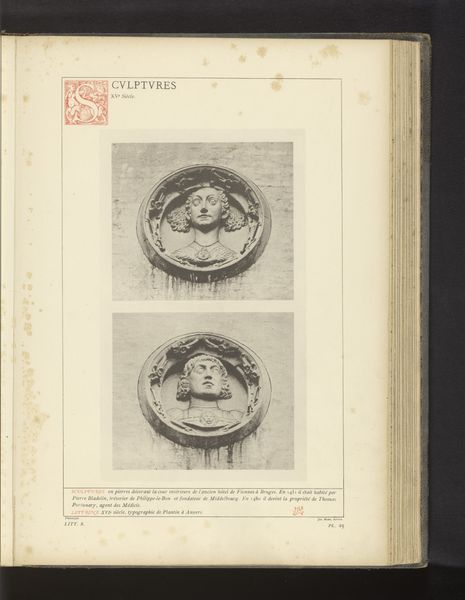
#
photo of handprinted image
#
aged paper
#
toned paper
#
3d printed part
#
sculpture
#
white palette
#
unrealistic statue
#
coloured pencil
#
historical font
#
statue
Dimensions: height 127 mm, width 198 mm
Copyright: Rijks Museum: Open Domain
Editor: This is a photograph titled “Koffieservies van zacht porselein,” or "Coffee Service of Soft Porcelain", made before 1884. It's currently held in the Rijksmuseum and attributed to Lemercier & Cie. There's something about the stillness and formality of this arrangement of porcelain that feels very telling of a specific era. What stands out to you when you look at this? Curator: It's striking how this image invites us to consider the social and political power embedded within everyday objects. Porcelain, especially a delicate service like this, speaks volumes about class, access, and the rituals of domestic life in the late 19th century. It begs the questions: Who used this set? What kinds of conversations were held over coffee served from these pieces? Editor: I hadn't really considered the conversation aspect. Was porcelain particularly significant during that time? Curator: Absolutely. The rise of industrial production and global trade meant that porcelain became more accessible, but possessing a refined set still signaled a certain level of wealth and cultural capital. Images like this, capturing these objects, further reinforced those ideals. Consider how the arrangement itself is constructed. Doesn’t it feel almost like a stage, setting the scene for a very specific performance of gentility and taste? Who benefits from that performance and who is excluded? Editor: That’s fascinating! I hadn’t thought about the staging of it all. It makes me wonder about the labor involved in creating these objects and the lives of the people who might have used them. Curator: Exactly! Thinking intersectionally, we can trace the threads connecting this delicate porcelain to global trade networks, colonial exploitation, and the suppression of marginalized communities. The beauty is deceptive. By unpacking its historical and social context, we start to realize how powerful even seemingly innocuous objects can be. Editor: I never imagined I could analyze a photograph of a porcelain set in so many ways. Thanks, I learned so much!
Comments
No comments
Be the first to comment and join the conversation on the ultimate creative platform.
